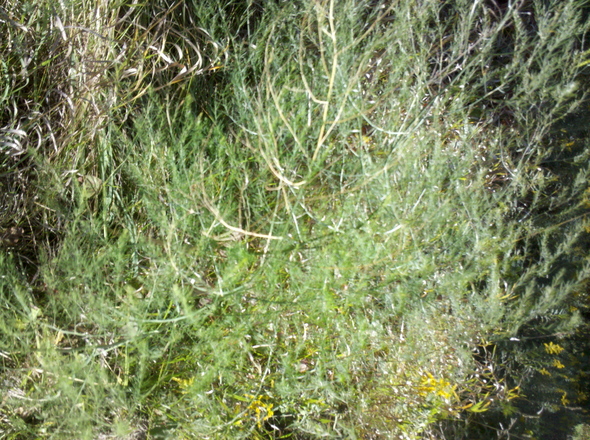Wildcrafting: Think ahead to harvest asparagus and maple syrup in the spring

Look for asparagus fronds now so that you can return to the spot in the spring and find a wild harvest. This mass of fronds was spotted between Dexter and Chelsea along a dirt road. It is also time to identify maples for tapping in February.
Linda Diane Feldt | Contributor
So watch as you drive those side roads, and think spring.
It is also time to look for maple trees. They practically demand you notice their locations as the fall foliage comes in. Every maple is a potential tree to tap in February. If the tree is large enough (more than 10 inches), it doesn’t have to be a sugar maple to be tapped. My experience is that the flavor of the non sugar maples is more maplely, with less sweet. I prefer it. It is far easier to find the maples as they come into their fall color than in the dead of winter with no leaves. So not them now, and plan for February maple syruping - in about five months.
Hickory, Sycamore and Beech trees can also all be tapped for sap, that is then boiled down for syrup. Hickory can be identified by looking for nut hulls after winter, and the sycamore has the distinctive tan and brown peeling bark. But still, making a positive ID is easier with help of the leaves.
What else can you look for now for later harvest?
Not a lot comes to mind. Poison ivy stands out in the fall, as it turns red. So you may identify places to stay away from or later remove the plant. As the greenery fades, black raspberry patches become distinct with their bluish canes. Wapato flowers in bloom now will lead you to patches of that somewhat rare (at least around here) edible tuber. But be careful: There are toxic look-a-likes.
Wildcrafting occurs year round, whether you are planning ahead, finding the next plant for harvest, or engaged in the harvesting and preservation. You can always add to your time outside by observing.
Linda Diane Feldt is a local Holistic Health Practitioner, writer, and teacher. She’ll be offering a free introductory class to wild harvesting sponsored by The People’s Food Co-op on Sept 23, 7-8:30 at Crazy Wisdom Bookstore and Tearoom. Pre-resistration is suggested but not required. You can also go on a weed walk Sept. 26, from 1-3 at a local park. There is a small fee. Contact Linda Diane at ldfeldt (at) holisticwisdom.org for more information. You can also follow her on twitter, or visit her Web site.

